Resistive
A resistive sensor is a device that converts physical quantities to be measured, such as displacement, deformation, force, acceleration, humidity, temperature, etc., into resistance. There are mainly resistance strain sensors, piezoresistive sensors, thermal resistance sensors, thermal sensors, gas sensors, and humidity sensors.
Frequency conversion power
The variable frequency power sensor performs AC sampling on the input voltage and current signal, and then the samplingThe value is connected to the digital input secondary instrument through a transmission system such as cable, optical fiber, etc. The digital input secondary instrument calculates the sampling value of voltage and current, and can obtain the effective value of voltage, effective value of current , fundamental wave voltage, fundamental wave current , Harmonic voltage, harmonic current , active power , fundamental wave power , harmonic power and other parameters.
Weighing
The load cell is a force-to-electric conversion device that can convert gravity into an electric signal, and it is a key component of an electronic weighing instrument .
There are many kinds of sensors that can realize force-to-electricity conversion, and the common ones are resistance strain type, electromagnetic force type and capacitive type. Electromagnetic force type is mainly used for electronic balances, capacitive type is used for some electronic crane scales, and most weighing products use resistance strain type load cells. The resistance strain type load cell has a simple structure, high accuracy, a wide range of applications, and can be used in a relatively poor environment. Therefore, resistance strain type load cells have been widely used in weighing instruments.
Resistance strain type
The resistance strain gauge in the sensor has the strain effect of metal , that is, it produces mechanical deformation under the action of external force, so that the resistance value changes accordingly. There are two types of resistance strain gauges: metal and semiconductor. Metal strain gauges are divided into wire type, foil type and thin film type. Semiconductor strain gauges have the advantages of high sensitivity (usually dozens of times that of wire and foil types) and small lateral effects .
Piezoresistive
The piezoresistive sensor is a device made by diffusion resistance on a semiconductor material substrate based on the piezoresistive effect of the semiconductor material. The substrate can be directly used as a measuring sensor element, and the diffusion resistance is connected in the form of a bridge in the substrate. When the substrate is deformed by an external force, the resistance value will change, and the bridge will produce a corresponding unbalanced output.
The substrate (or diaphragm) materials used as piezoresistive sensors are mainly silicon wafers and germanium wafers. Silicon piezoresistive sensors made of silicon wafers as sensitive materials have attracted more and more attention, especially for pressure measurement. The application of solid-state piezoresistive sensors with speed and speed is the most common.
Thermal resistance
The thermal resistance temperature measurement is based on the characteristic that the resistance value of the metal conductor increases with the increase in temperature for temperature measurement.Thermal resistors are mostly made of pure metal materials , and platinum and copper are the most widely used. In addition, materials such as nickel, manganese, and rhodium have begun to be used to make thermal resistors .
The thermal resistance sensor mainly uses the characteristic that the resistance value changes with temperature to measure temperature and temperature-related parameters. This kind of sensor is more suitable in occasions where the temperature detection accuracy is relatively high. A wide range of thermal resistance materials are platinum, copper, nickel, etc., which have the characteristics of large resistance temperature coefficient, good linearity, stable performance, wide operating temperature range, and easy processing. It is used to measure the temperature in the range of -200℃~+500℃.
Classification of thermal resistance sensors:
1. NTC thermal resistance sensor:
This type of sensor is a negative temperature coefficient sensor, that is, the resistance of the sensor decreases with increasing temperature.
2. PTC thermal resistance sensor:
This type of sensor is a positive temperature coefficient sensor, that is, the resistance of the sensor increases with increasing temperature.
laser
A sensor that uses laser technology for measurement.It consists of a laser, a laser detector and a measuring circuit. The laser sensor is a new type of measuring instrument. Its advantages are that it can realize non-contact long-distance measurement, fast speed, high precision, large range, strong resistance to light and electrical interference, etc.
When the laser sensor is working, the laser emitting diode is first aimed at the target to emit laser pulses. The laser light is scattered in all directions after being reflected by the target. Part of the scattered light returns to the sensor receiver and is imaged on the avalanche photodiode after being received by the optical system. The avalanche photodiode is an optical sensor with an internal amplification function, so it can detect extremely weak light signals and convert them into corresponding electrical signals.
The high directivity, high monochromaticity and high brightness of the laser can realize non-contact long-distance measurement. Laser sensors are often used to measure physical quantities such as length (ZLS-Px), distance (LDM4x), vibration (ZLDS10X), speed (LDM30x), orientation, etc., and can also be used for flaw detection and atmospheric pollutant monitoring.
Hall
The Hall sensor is a magnetic field sensor made according to the Hall effect.It is widely used in industrial automation technology, detection technology and information processing. The Hall effect is a basic method to study the properties of semiconductor materials. The Hall coefficient measured by the Hall effect experiment can determine important parameters such as the conductivity type, carrier concentration, and carrier mobility of semiconductor materials.
Hall sensors are divided into linear Hall sensors and switch Hall sensors.
1. Linear Hall sensor is composed of Hall element, linear amplifier and emitter follower, it outputs analog quantity.
2. The switch-type Hall sensor is composed of a voltage regulator, a Hall element, a differential amplifier , a Schmitt trigger and an output stage, and it outputs a digital quantity.
The Hall voltage changes with the intensity of the magnetic field. The stronger the magnetic field , the higher the voltage, the weaker the magnetic field, and the lower the voltage. The Hall voltage value is very small, usually only a few millivolts, but by the amplifier in the integrated circuit, the voltage can be amplified enough to output a strong signal. If the Hall IC is used for sensing, it is necessary to use a mechanical method to change the magnetic field strength. The method shown in the figure below uses a rotating impeller as a switch to control the magnetic flux. When the impeller blades are in the air gap between the magnet and the Hall IC, the magnetic field deviates from the integrated chip and the Hall voltage disappears. In this way, the change of the output voltage of the Hall IC can indicate a certain position of the impeller drive shaft. Using this working principle, the Hall IC chip can be used as an ignition timing sensor. The Hall effect sensor is a passive sensor. It needs an external power supply to work. This feature enables it to detect low-speed operation.
temperature
1. Room temperature pipe temperature sensor: The room temperature sensor is used to measure indoor and outdoor ambient temperature,The tube temperature sensor is used to measure the tube wall temperature of the evaporator and condenser. The room temperature sensor and the tube temperature sensor have different shapes, but the temperature characteristics are basically the same. According to the temperature characteristics, there are two types of room temperature tube temperature sensors used by Midea: 1. The constant B value is 4100K±3%, and the reference resistance is 25°C corresponding to the resistance 10KΩ±3%. The corresponding resistance tolerance at 0°C and 55°C is about ±7%; while below 0°C and above 55°C, the resistance tolerance will be different for different suppliers. The higher the temperature, the smaller the resistance; the lower the temperature, the greater the resistance. The farther it is from 25°C, the larger the tolerance range of the corresponding resistance.
2. Exhaust temperature sensor : The exhaust temperature sensor is used to measure the exhaust temperature at the top of the compressor. The constant B value is 3950K±3%, and the reference resistance is 90℃ corresponding to the resistance 5KΩ±3%.
3. Module temperature sensor: The module temperature sensor is used to measure the temperature of the variable frequency module (IGBT or IPM). The model of the temperature sensor used is 602F-3500F, and the reference resistance is 25°C corresponding to the resistance 6KΩ±1%. The corresponding resistance values of several typical temperatures are: -10℃→(25.897~28.623)KΩ; 0℃→(16.3248~17.7164)KΩ; 50℃→(2.3262~2.5153)KΩ; 90℃→(0.6671~0.7565) KΩ.
There are many types of temperature sensors, thermal resistance: PT100, PT1000, Cu50, Cu100; thermocouple: B, E, J, K, S and so on. Temperature sensors not only have a wide range of types, but also have various combinations. Suitable products should be selected according to different places.
The principle of temperature measurement: According to the principle that the resistance value of the resistance and the electric potential of the thermocouple change regularly with different temperatures, we can get the temperature value that needs to be measured.
Wireless temperature
The wireless temperature sensor turns the temperature parameter of the controlled object into an electrical signal, and sends a wireless signal to the receiving terminal to detect, adjust and control the system. It can be directly installed in the junction box of general industrial thermal resistance and thermocouple, forming an integrated structure with field sensing elements. It is usually used in conjunction with wireless relays, receiving terminals, communication serial ports, electronic computers, etc. This not only saves compensation wires and cables, but also reduces signal transmission distortion and interference, thereby obtaining high-precision measurement results.
Wireless temperature sensors are widely used in automation industries such as chemical industry, metallurgy , petroleum, electric power, water treatment, pharmaceuticals, and food. For example: temperature collection on high-voltage cables; temperature collection in harsh environments such as underwater; temperature collection on moving objects; transmission of sensor data in spaces that are difficult to wire through ; data collection schemes selected simply to reduce wiring costs; without AC power supply Data measurement in the workplace; portable data measurement in non-fixed locations.
intelligent
The function of the smart sensor is to simulate the coordinated actions of the human senses and the brain,It is proposed based on long-term research and practical experience of testing technology. It is a relatively independent intelligent unit. Its appearance reduces the original demanding requirements of hardware performance, and the performance of the sensor can be greatly improved with the help of software.
1. Information storage and transmission-With the rapid development of the SmartDistributed System (SmartDistributedSystem), intelligent units are required to have communication functions, and two-way communication is carried out in digital form using communication networks, which is also one of the key signs of smart sensors. Smart sensors realize various functions through test data transmission or receiving instructions. Such as gain setting, compensation parameter setting, internal inspection parameter setting, test data output, etc.
2. Self-compensation and calculation function-engineers and technicians who have been engaged in sensor development for many years have been doing a lot of compensation for the temperature drift and output nonlinearity of the sensor, but they have not fundamentally solved the problem. The self-compensation and calculation functions of the smart sensor have opened up a new way for the temperature drift and nonlinear compensation of the sensor. In this way, relax the sensor processing precision requirements, as long as the repeatability of the sensor can be guaranteed, the test signal is calculated by the software by the microprocessor, and the drift and nonlinearity can be compensated by multiple fitting and difference calculation methods. Obtain more accurate measurement results pressure sensor.
3. Self-inspection, self-calibration, and self-diagnosis functions-ordinary sensors need to be inspected and calibrated regularly to ensure sufficient accuracy during normal use. These tasks generally require the sensor to be disassembled from the site of use to the laboratory or inspection department conduct. The abnormality of the online measurement sensor cannot be diagnosed in time. The situation of using smart sensors is greatly improved. First, the self-diagnostic function performs self-check when the power is turned on, and diagnoses tests to determine whether the components are malfunctioning. Secondly, it can be corrected online according to the time of use, and the microprocessor uses the measurement characteristic data stored in the EPROM for comparison and verification.
4. Compound sensitive function-observe the surrounding natural phenomena, common signals are sound, light, electricity, heat, force, chemistry, etc. Sensitive component measurement generally adopts two methods: direct and indirect measurement. The smart sensor has a composite function, can measure multiple physical and chemical quantities at the same time, and give information that can more comprehensively reflect the law of matter movement.
Photosensitive
Photosensitive sensor is one of the most common sensors. It has a wide variety of types, including: photocells, photomultiplier tubes, photoresistors, photosensitive transistors, solar cells, infrared sensors, ultraviolet sensors, optical fiber photoelectric sensors, color sensors, CCD and CMOS image sensor, etc. Its sensitive wavelength is near the visible wavelength, including infrared wavelength and ultraviolet wavelength. The light sensor is not only limited to the detection of light, it can also be used as a detection element to form other sensors to detect many non-electric quantities, as long as these non-electric quantities are converted into changes in light signals. The light sensor is one of the sensors with the largest output and the most widely used. It occupies a very important position in the introduction of automatic control and non-electrical electrical measurement technology. The simplest photosensitive sensor [2] is a photoresistor, and when a photon hits the junction, an electric current is generated.
biology
The concept of biosensor
Biosensor is an interdisciplinary subject that uses biologically active materials (enzymes, proteins , DNA , antibodies, antigens, biofilms, etc.) to organically combine with physical and chemical transducers. It is an advanced detection method that is indispensable for the development of biotechnology. And monitoring methods are also rapid and microanalysis methods at the molecular level of substances. Various biosensors have the following common structures: including one or several related biologically active materials (biofilms) and physical or chemical transducers (sensors) that can convert signals expressed by biological activity into electrical signals, a combination of the two Together, modern microelectronics and automated instrument technology are used to reprocess biological signals to form a variety of biosensor analysis devices, instruments and systems that can be used.
Principles of biosensors
The substance to be tested enters the biologically active material through diffusion, and undergoes a biological reaction through molecular recognition. The information generated is then converted into a quantifiable and processable electrical signal by the corresponding physical or chemical transducer, and then amplified by the secondary instrument And output, you can know the concentration of the analyte.
Classification of biosensors
According to the classification of life substances used in its receptors, it can be divided into: microbial sensors, immunosensors, tissue sensors, cell sensors, enzyme sensors , DNA sensors, and so on.
According to the principle of sensor device detection, it can be divided into: thermal biosensor, field effect tube biosensor, piezoelectric biosensor, optical biosensor, acoustic channel biosensor, enzyme electrode biosensor, mediator biosensor, etc.
According to the type of interaction of biologically sensitive substances, it can be divided into two types: affinity type and metabolite type.
Vision
working principle:
A visual sensor refers to the ability to capture thousands of pixels of light from an entire image. The clarity and finesse of the image are often measured by resolution, expressed in the number of pixels.
The vision sensor has thousands of pixels that capture light from an entire image. The clarity and fineness of an image is usually measured by resolution, expressed in the number of pixels.
After capturing the image, the vision sensor compares it with the reference image stored in the memory for analysis. For example, if the vision sensor is set to identify machine parts with eight bolts correctly inserted, the sensor knows that parts with only seven bolts should be rejected, or parts with misaligned bolts. In addition, no matter where the machine part is located in the field of view, whether the part is rotated within 360 degrees, the vision sensor can make a judgment.
Application areas:
The low cost and ease of use of vision sensors have attracted machine designers and process engineers to integrate them into various applications that once relied on manual labor, multiple photoelectric sensors, or no inspection at all. Industrial applications of vision sensors include inspection, metrology, measurement, orientation, defect detection and sorting. The following are just some application examples:
In the automobile assembly plant, check whether the glue beads applied to the door frame by the robot are continuous and have the correct width;
In the bottling plant, verify that the cap is properly sealed, the filling level is correct, and that no foreign objects fall into the bottle before capping;
In the packaging production line, ensure that the correct packaging label is pasted in the correct position;
In the pharmaceutical packaging production line, inspect whether there are broken or missing tablets in the blister pack of aspirin tablets;
In metal stamping companies, stamping parts are inspected at a speed of more than 150 pieces per minute, which is more than 13 times faster than manual inspection.
Displacement
The displacement sensor is also called a linear sensor, a sensor that converts displacement into electricity. Displacement sensor is a linear device belonging to metal sensing. The function of the sensor is to convert various measured physical quantities into electricity. It is divided into inductive displacement sensor, capacitive displacement sensor, photoelectric displacement sensor, ultrasonic displacement sensor, and Hall. Displacement sensor.
In this conversion process, many physical quantities (such as pressure, flow, acceleration, etc.) often need to be converted to displacement first, and then the displacement is converted to electricity. Therefore, the displacement sensor is an important basic sensor. In the production process, the measurement of displacement is generally divided into measuring the physical size and mechanical displacement. Mechanical displacement includes linear displacement and angular displacement. According to the different forms of the measured variable, the displacement sensor can be divided into two types: analog and digital. The analog type can be divided into physical type (such as self-generation type) and structural type. Commonly used displacement sensors are mostly analog structures, including potentiometer -type displacement sensors, inductive displacement sensors, self-aligning machines, capacitive displacement sensors, eddy current-type displacement sensors, Hall-type displacement sensors, etc. An important advantage of the digital displacement sensor is that it is convenient to send the signal directly into the computer system. This kind of sensor is developing rapidly, and its application is becoming more and more extensive.
pressure
The pressure sensor is the most commonly used sensor in industrial practice. It is widely used in various industrial automation environments, including water conservancy and hydropower, railway transportation, intelligent buildings, production automation, aerospace, military, petrochemical, oil wells, electric power, ships, Many industries such as machine tools and pipelines.
Ultrasonic distance measurement
Ultrasonic distance measurement sensor adopts the principle of ultrasonic echo distance measurement, using precise time difference measurement technology to detect the distance between the sensor and the target, using a small angle, small blind area ultrasonic sensor, with accurate measurement, non-contact, waterproof, anti-corrosion, Low cost and other advantages, suitable for liquid level, level detection, unique liquid level, material level detection methods, which can ensure stable output when there is foam or large shaking on the liquid level, and echo is not easy to be detected. Application industry: liquid level, material level, material level detection, industrial process control, etc.
24GHz radar
The 24GHz radar sensor uses high-frequency microwaves to measure the speed , distance , and movement of objectsDirection, azimuth and angle information, using flat microstrip antenna design, with small size, light weight, high sensitivity, strong stability, etc., widely used in intelligent transportation, industrial control, security, sports, smart home and other industries. On November 19, 2012, the Ministry of Industry and Information Technology officially issued the "Notice of the Ministry of Industry and Information Technology on Issuing the Frequency of Use of Short-range Vehicle Radar Equipment in the 24GHz Frequency Band" (Ministry of Industry and Information Technology No. [2012] No. 548), which clearly stated that the 24GHz frequency band was short-range. Vehicle-mounted radar equipment is the standard for vehicle-mounted radar equipment. [3]
Integrated temperature
The integrated temperature sensor is generally composed of a temperature measuring probe (thermocouple or thermal resistance sensor) and a two-wire solid electronic unit. The temperature measuring probe is directly installed in the junction box in the form of a solid module to form an integrated sensor. Integrated temperature sensors are generally divided into two types: thermal resistance and thermocouple type.
The thermal resistance temperature sensor is composed of a reference unit, R/V conversion unit, linear circuit, reverse connection protection, current limiting protection, and V/I conversion unit. After the temperature measuring resistance signal is converted and amplified, the linear circuit compensates for the non-linear relationship between temperature and resistance. After the V/I conversion circuit, a 4-20mA constant current signal with a linear relationship with the measured temperature is output.
The thermocouple temperature sensor is generally composed of circuit units such as reference source, cold junction compensation, amplification unit, linearization processing, V/I conversion, broken couple processing, reverse connection protection, and current limiting protection. It is to amplify the thermoelectric potential generated by the thermocouple through cold junction compensation, and then use a linear circuit to eliminate the nonlinear error of thermoelectric potential and temperature, and finally amplify and convert it into a 4-20mA current output signal. In order to prevent accidents caused by the failure of temperature control due to the broken wire of the thermocouple in the thermocouple measurement, the sensor is also equipped with a power-off protection circuit. When the thermocouple wire is broken or the connection is poor, the sensor will output the maximum value (28mA) to make the meter cut off the power. The integrated temperature sensor has the advantages of simple structure, saving leads, large output signal, strong anti-interference ability, good linearity, simple display instrument, solid module anti-vibration and moisture-proof, reverse connection protection and current-limiting protection, and reliable operation. The output of the integrated temperature sensor is a unified 4-20mA signal; it can be matched with a computer system or other conventional instruments. It can also be made into an explosion-proof or fire-proof measuring instrument as required by the user.
Liquid level
1. Floating ball type liquid level sensor
The float type liquid level sensor is composed of a magnetic float, a measuring pipe, a signal unit, an electronic unit, a junction box and installation parts.
Generally, the specific gravity of the magnetic float is less than 0.5, and it can float above the liquid surface and move up and down along the measuring tube. The pipe is equipped with a measuring element, which can convert the measured liquid level signal into a resistance signal proportional to the change of the liquid level under the action of external magnetism, and convert the electronic unit into 4-20mA or other standard signal output. The sensor is a modular circuit, which has the advantages of acid resistance, moisture resistance, shock resistance, corrosion resistance, etc. The circuit contains a constant current feedback circuit and an internal protection circuit, which can make the maximum output current not exceed 28mA, so it can reliably protect the power supply and make the secondary instrument Not to be damaged.
2. Float type liquid level sensor
The float-type liquid level sensor is a magnetic float that is changed to a float, which is designed according to the Archimedes buoyancy principle. The float type liquid level sensor uses the tiny metal film strain sensing technology to measure the liquid level, boundary or density of the liquid. It can carry out routine setting operations through the on-site buttons when it is working.
3. Static pressure or liquid level sensor
The sensor works using the principle of hydrostatic pressure measurement. It generally uses silicon pressure sensor to convert the measured pressure into an electrical signal, which is amplified by an amplifier circuit and compensated by a compensation circuit, and finally output in a 4-20mA or 0-10mA current mode.
Vacuum
The vacuum sensor is produced by advanced silicon micro-machining technology. The absolute pressure transmitter is made of integrated silicon pressure resistance sensor as the core element of the sensor. Due to the use of silicon-silicon direct bonding or silicon-Pyrex glass electrostatic The vacuum reference pressure chamber formed by bonding, and a series of stress-free packaging technology and precision temperature compensation technology have outstanding advantages of excellent stability and high precision, and are suitable for absolute pressure measurement and control under various conditions.
Features and uses
Using low-range chip vacuum absolute pressure packaging, the product has a high overload capacity. The chip is isolated by vacuum-filled silicon oil, and the stainless steel film transfers pressure. It has excellent media compatibility and is suitable for the measurement of the vacuum pressure of most gas and liquid media that does not corrode 316L stainless steel. The degree of vacuum spreads its application in low vacuum measurement and control in various industrial environments [4] .
Capacitive level
Capacitive level sensors are suitable for industrial enterprises to measure and control the production process during the production process. They are mainly used for long-distance continuous measurement and indication of the liquid level of conductive and non-conductive media or the level of powder and granular solids.
The capacitive liquid level sensor is composed of a capacitive sensor and an electronic module circuit. It uses a two-wire 4-20mA constant current output as the basic type. After conversion, it can be output in three-wire or four-wire mode. The output signal is formed into 1~5V, 0~5V, 0~10mA and other standard signals. The capacitance sensor consists of an insulated electrode and a cylindrical metal container filled with a measuring medium. When the material level rises, because the dielectric constant of the non-conductive material is significantly lower than that of air, the capacitance changes with the height of the material. The module circuit of the sensor is composed of units such as reference source, pulse width modulation, conversion, constant current amplification, feedback and current limiting. The advantages of using the principle of pulse width modulation for measurement are low frequency, radio frequency interference to surrounding elements, good stability, good linearity, and no obvious temperature drift.
Antimony electrode acidity
The antimony electrode acidity sensor is an industrial online analysis instrument that integrates PH detection, automatic cleaning, and electrical signal conversion. It is a PH value measurement system composed of an antimony electrode and a reference electrode. In the tested acid solution, an antimony trioxide oxide layer will be formed on the surface of the antimony electrode, so a potential difference will be formed between the metal antimony surface and the antimony trioxide. The magnitude of the potential difference depends on the concentration of antimony oxide in Sansuo, which corresponds appropriately to the hydrogen ion in the measured acid solution. If the appropriateness of antimony, antimony trioxide and the aqueous solution are all regarded as 1, the electrode potential can be calculated by the Nernst formula.
The solid module circuit in the antimony electrode acidity sensor consists of two parts. For the sake of safety on site, the power supply part adopts AC 24V to supply power to the secondary instrument. In addition to providing driving power for the cleaning motor, this power supply should also be converted into a corresponding DC voltage by a current conversion unit for use by the transmission circuit. The second part is the measurement sensor circuit, which amplifies the reference signal and PH acidity signal from the sensor and sends it to the slope adjustment and positioning adjustment circuit, so that the internal resistance of the signal is reduced and can be adjusted. The amplified PH signal and the temperature compensated signal are superimposed and then differentially entered into the conversion circuit, and finally the 4-20mA constant current signal corresponding to the PH value is output to the secondary meter to complete the display and control the PH value.
Acid, alkali, salt
The acid, alkali, and salt concentration sensors determine the concentration by measuring the conductivity of the solution. It can continuously detect the concentration of acid, alkali and salt in the aqueous solution in the industrial process. This sensor is mainly used in industrial production processes such as boiler feedwater treatment, chemical solution preparation, and environmental protection.
The working principle of the acid, alkali, and salt concentration sensor is: within a certain range, the concentration of the acid-base solution is proportional to its conductivity. Therefore, as long as the change in the conductivity of the solution is measured, the acid-base concentration can be known. When the measured solution flows into the special conductivity cell, if the electrode polarization and distributed capacitance are ignored, it can be equivalent to a pure resistance. When a constant voltage alternating current flows, its output current has a linear relationship with conductivity, and conductivity is proportional to the concentration of acid and alkali in the solution. Therefore, as long as the solution current is measured, the concentration of acid, alkali, and salt can be calculated.
The acid, alkali, and salt concentration sensor is mainly composed of a conductivity cell, an electronic module, a display meter and a shell. The electronic module circuit is composed of excitation power supply, conductivity cell, conductivity amplifier, phase-sensitive rectifier, demodulator, temperature compensation, overload protection and current conversion units.
Conductivity
It is a process instrument (integrated sensor) that indirectly measures the ion concentration by measuring the conductivity of the solution. It can continuously detect the conductivity of the aqueous solution in the industrial process.
Since the electrolyte solution is a good conductor of electricity like the metal conductor, there must be resistance when the current flows through the electrolyte solution, and it conforms to Ohm's law. However, the resistance temperature characteristics of liquids are opposite to that of metal conductors and have negative temperature characteristics. In order to distinguish it from metal conductors, the conductivity of the electrolyte solution is expressed by conductance (reciprocal of resistance) or conductivity (reciprocal of resistivity). When two mutually insulated electrodes form a conductivity cell, if the solution to be tested is placed in the middle and a constant voltage alternating current is passed through it, a current loop is formed. If the voltage size and the electrode size are fixed, there is a certain functional relationship between the loop current and the conductivity. In this way, by measuring the current flowing in the solution to be tested, the conductivity of the solution to be tested can be measured. The structure and circuit of the conductivity sensor are the same as the acid, alkali, and salt concentration sensors.



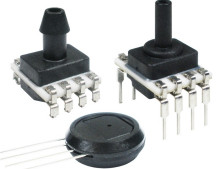

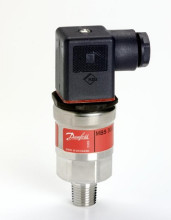

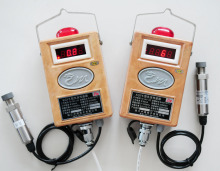

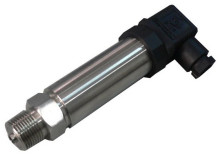
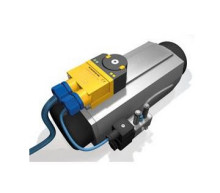
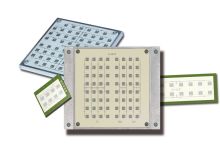


 Account not verified
Account not verified